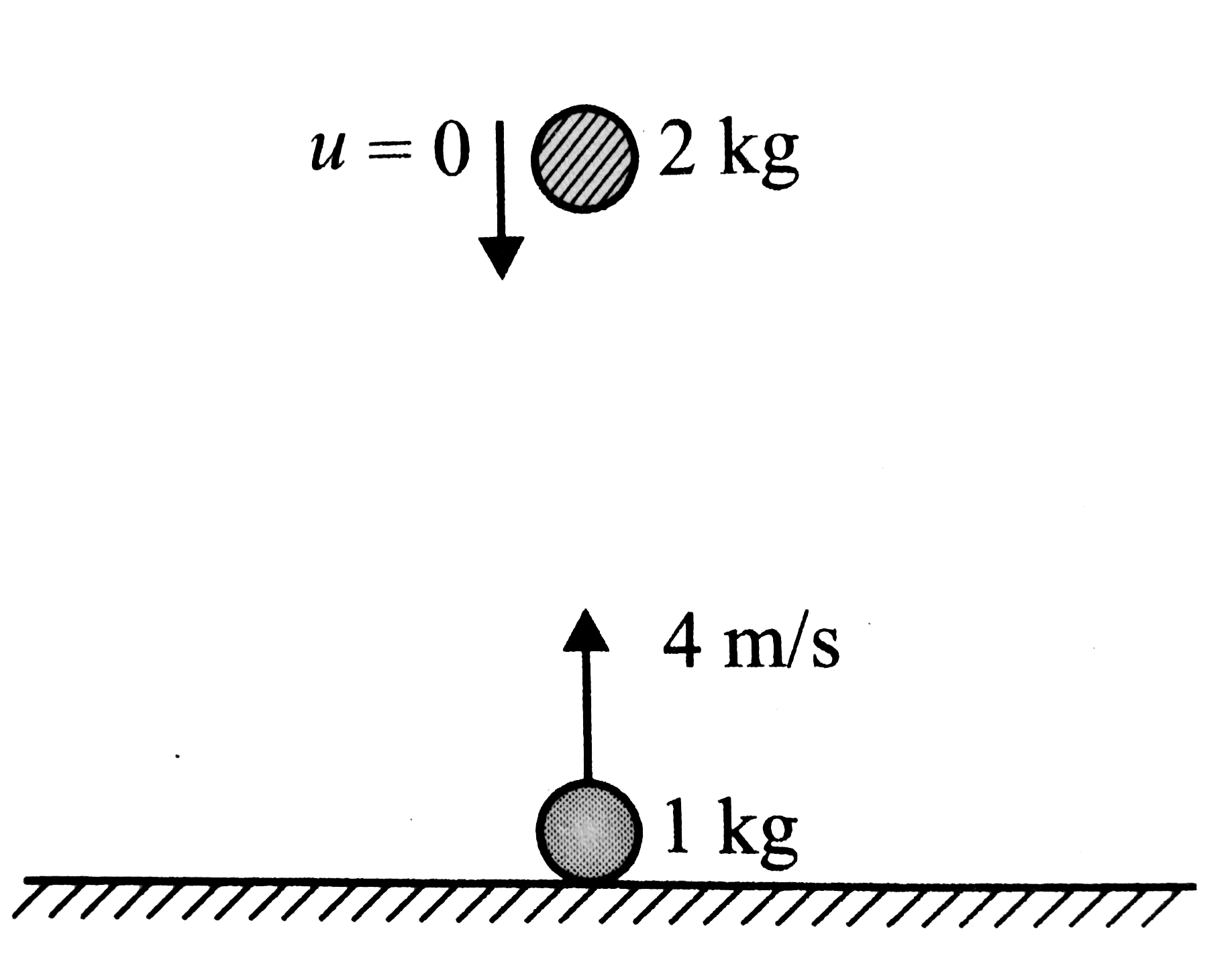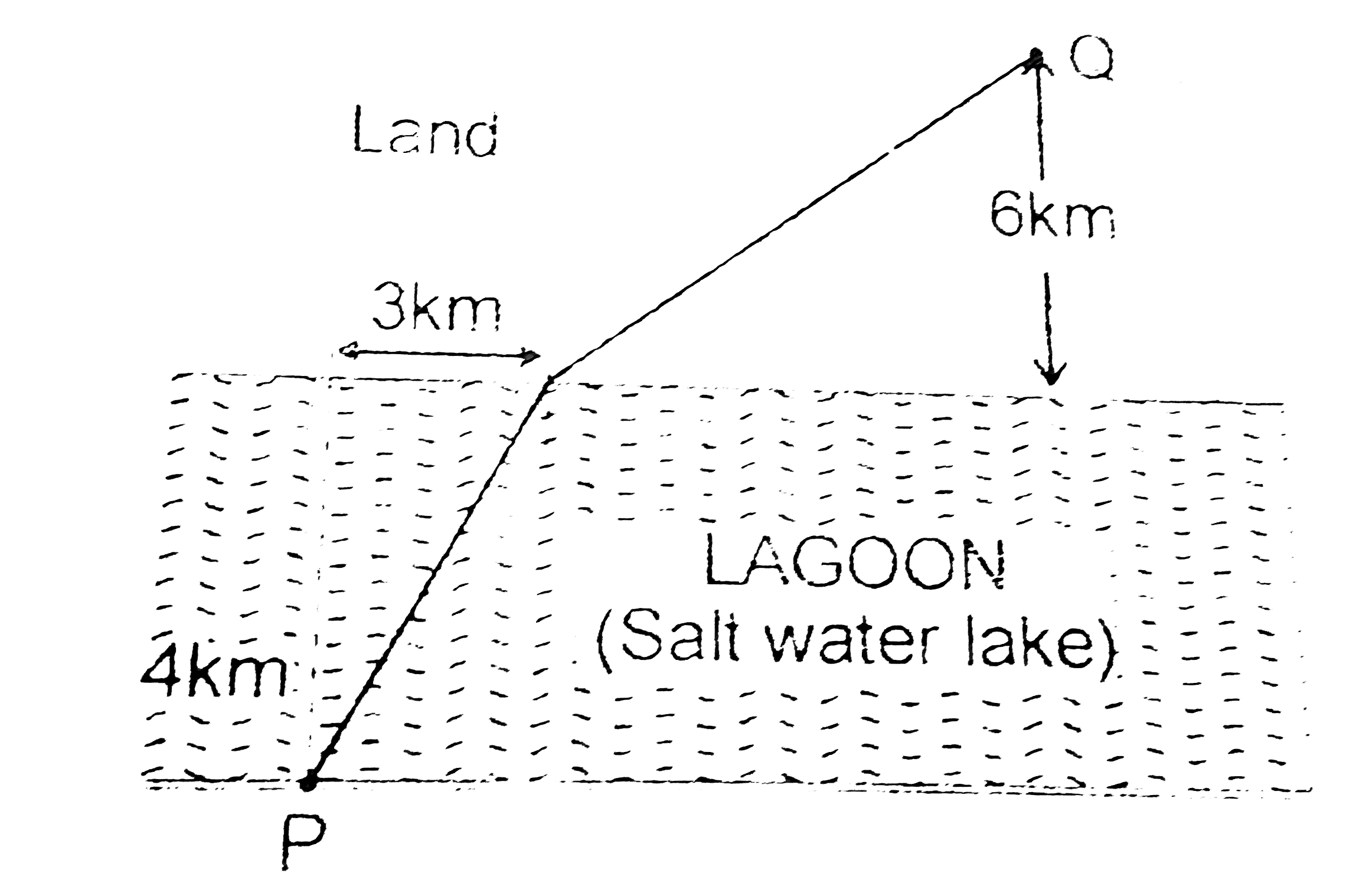In a second ODI match between England and India Bhuwnesh kumar bowled his medium fast bowling. He starts his run up from the distance of 50m from the stumps (bowling end) and at the time of bowling a ball,his speed is 36(km)/(hr) and the speed of ball is 144(km)/(hr).
If his mass is 70kg and mass of the ball is 14kg and the heat produce in his body is one tenth of the total work done by him, then
Select the incorrect statement :
Work done by the friction on him is negative
Work done by the ball on him is negative
Work done by ground on him is zero
Work done by the man on the ball is positive.
The correct Answer is:A
To solve the problem, we need to analyze the situation step by step, focusing on the work done by Bhuvnesh Kumar while bowling and the kinetic energy involved.
Step 1: Convert Speeds from km/hr to m/s
First, we need to convert the speeds from kilometers per hour (km/hr) to meters per second (m/s).
- Speed of Bhuvnesh Kumar (V1):
V1=36km/hr=36×10003600=10m/s
- Speed of the ball (V2):
V2=144km/hr=144×10003600=40m/s
Step 2: Calculate the Initial and Final Kinetic Energy of the Ball
Next, we calculate the initial and final kinetic energy of the ball.
- Initial kinetic energy of the ball (KE_initial):
KEinitial=0(since the ball is at rest)
- Final kinetic energy of the ball (KE_final):
KEfinal=12mv2=12(14)(40)2=12×14×1600=200J
Step 3: Calculate the Work Done by Bhuvnesh Kumar on the Ball
The work done by Bhuvnesh Kumar on the ball is equal to the change in kinetic energy of the ball.
- Work done (W):
W=KEfinal−KEinitial=200−0=200J
Step 4: Calculate the Heat Produced
According to the problem, the heat produced in his body is one-tenth of the total work done by him.
- Heat produced (Q):
Q=110W=110×200=20J
Step 5: Analyze the Work Done by the Ground and Friction
- The work done by the ground on Bhuvnesh Kumar is zero because the displacement is perpendicular to the normal force exerted by the ground.
- The work done by the friction force on him is negative, but since he is not sliding, the effective displacement due to friction is zero.
Step 6: Conclusion
Based on the above calculations and reasoning, we can conclude that:
- The work done by Bhuvnesh Kumar on the ball is positive.
- The work done by the ground on him is zero.
- The work done by the ball on him is negative.
The incorrect statement in the problem is regarding the work done by the friction force, which is stated to be negative. The correct interpretation is that the work done by the friction force is zero.
First, we need to convert the speeds from kilometers per hour (km/hr) to meters per second (m/s).
V1=36km/hr=36×10003600=10m/s
V2=144km/hr=144×10003600=40m/s
Next, we calculate the initial and final kinetic energy of the ball.
KEinitial=0(since the ball is at rest)
KEfinal=12mv2=12(14)(40)2=12×14×1600=200J
The work done by Bhuvnesh Kumar on the ball is equal to the change in kinetic energy of the ball.
W=KEfinal−KEinitial=200−0=200J
According to the problem, the heat produced in his body is one-tenth of the total work done by him.
Q=110W=110×200=20J
- The work done by the ground on Bhuvnesh Kumar is zero because the displacement is perpendicular to the normal force exerted by the ground.
- The work done by the friction force on him is negative, but since he is not sliding, the effective displacement due to friction is zero.
Based on the above calculations and reasoning, we can conclude that:
- The work done by the ground on him is zero.
- The work done by the ball on him is negative.
Topper's Solved these Questions
Similar Questions
In a second ODI match between England and India Bhuwnesh kumar bowled his medium fast bowling. He starts his run up from the distance of 50m from the stumps (bowling end) and at the time of bowling a ball,his speed is 36(km)/(hr) and the speed of ball is 144(km)/(hr).
If his mass is 70kg and mass of the ball is 14kg and the heat produce in his body is one tenth of the total work done by him, then
Energy spent by bowler in throwing one ball is :−View SolutionIn a second ODI match between England and India Bhuwnesh kumar bowled his medium fast bowling. He starts his run up from the distance of 50m from the stumps (bowling end) and at the time of bowling a ball,his speed is 36(km)/(hr) and the speed of ball is 144(km)/(hr).
If his mass is 70kg and mass of the ball is 14kg and the heat produce in his body is one tenth of the total work done by him, then
If he accelerates uniformly to the sumps find the average friction force acting on him :−View Solution
Knowledge Check
- Question 1 - Select One
A boy goes from his house to school by bus at a speed of 20kmh−1 and returns back through the same route at a speed of 30kmh−1 . The average speed of his journey is :
A24kmh−1B25kmh−1C30kmh−1D20kmh−1
Ram covers a distance of 100 km with variable speed. During the first half of his journey his speed was 20 km/h and during the rest of his journey his speed was 40 km/h. Calculate the average speed of Ram during the whole course of his motion.
View SolutionA man goes 40m due north and then 50m due west. Find his distance from the starting point.
View SolutionA ball of mass 1kg is thrown up with an initial speed of 4m/s. A second ball of mass 2kg is released from rest from some height as shown in Fig. Choose the correct statement (s).
 View Solution
View SolutionA man starting from point P cross a 4km wide lagoon and reaches point Q in the shortest possible time by the path shown in the figure. If the person swims at a speed of 3km//hr and walks at a speed of 4km//hr, then find his time fo journey (in minutes).
 .View Solution
.View SolutionA man drives his car uniformly at 30 km/h for three hour After it he covered next 90 km distance with uniform speed of 45 km/hr. Find the average speed of car.
View SolutionIf the coefficient of friction between an insect and bowl is μ and the radius of the bowl is r, find the maximum height to which the insect can crawl in the bowl.
View SolutionIf the coefficient of friction between an insect and bowl is μ and the radius of the bowl is r, find the maximum height to which the insect can crawl in the bowl.
View Solution
